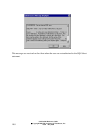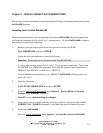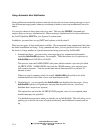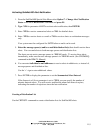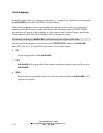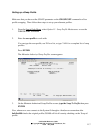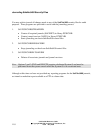11.4
SafeNet/400 Reference Guide
Copyright 2008 MP Associates of Westchester, Inc.
V8.50 - May 2008
Using Automatic Alert Notification
Alert notification continually monitors network activity and can issue warning messages to up to
five different message queues whenever an attempt is made to access an unauthorized server or
object.
You can also choose to have alerts sent via e-mail. This uses the SNDDST command and
requires that you set up a distribution list. When creating a distribution list for alert notification,
the List ID Qualifier MUST be your System i5 system name.
In addition, you must have set up SMTP mail options on the System i5.
There are two types of alert notification available. We recommend using summarized alerts after
the initial installation and setup. Using summarized alerts, you can prevent a flood of e-mails in
the event of a large number of rejected transactions being processed by SafeNet/400.
1. Summarized alerts - you can receive a message that gives summarized information
regarding SafeNet/400 rejections. For example, "There have been six (6) rejections by
SafeNet/400 since 01/01/99 at 12:00:00".
This process starts the SAFELOGING subsystem, which contains a pre-start job called
ALERTWATCH. SAFELOGING runs from the *BASE memory pool and uses very
little system resources. You can set the time interval between alerts; by default 30
minutes is used.
When you specify summary alerts via e-mail, SafeNet/400 will include a list of the
summarized alerts in the form of an e-mail attachment text file.
2. Detailed alerts - you can specify that SafeNet/400 send detailed alert messages. Every
SafeNet/400 rejection will generate a message that describes the user, server and
date/time that a request was rejected.
This option does not start the ALERTWATCH program, since it is not required when
detailed messages are specified.
Use detailed message alerts when you initially set up SafeNet/400. This will allow you to
quickly get an alert in the event of rejections that may need additional research and set
up.



